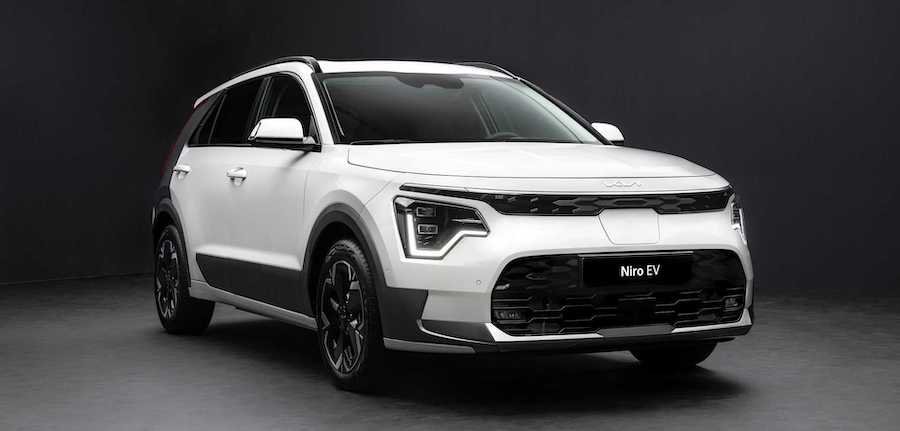New 2022 Kia Niro swaps platform for performance boosts

The second-generation Kia Niro, which will be offered with hybrid, plug-in hybrid and full-electric powertrains, has been “redesigned from the ground up” to meet growing competition, according to the firm’s bosses.
With styling inspired by the HabaNiro concept car, the new machine – which was first revealed late last year – will go on sale in the UK later this month, with first deliveries due in July. The electric version is expected to arrive around August.
While the Niro builds on the styling of its predecessor, it is actually built on a new Hyundai Motor Group platform. While the first-generation Kia Niro used the J Eco-Car architecture, the new model is the first Kia to sit on the new K3 platform currently used by the Elantra saloon. That platform is designed for electrified powertrains.
The platform switch means the Niro has grown slightly: it is 65mm longer, with the wheelbase increased by 20mm to slightly increase interior space.
The hybrid version will use a 1.6-litre petrol engine mated to a 43bhp electric motor, giving a total output of 139bhp and 199lb ft of torque. The plug-in hybrid features the same engine paired with a larger 83kW electric motor, raising output to 180bhp. The PHEV’s electric motor is powered by an 11.1kWh battery – up from 8.9kWh in the old model – giving an extended EV-only range of 40.3 miles.
Both the hybrid and PHEV are powered by a six-speed automatic gearbox, with reverse gear in both now solely powered by electric power. They can be paired with a Kia smartphone app and set to operate in EV mode in set ‘green zones’ and restricted areas. The PHEV model also features a built-in 5.5kWh Positive Temperature Coefficient heater, which helps to extend the driving range in colder conditions, and means that owners can utilise a pre-heating system similar to an EV.
The Niro EV – which has been rebadged from the e-Niro to bring it in line with other Kia models – maintains the same 201bhp electric motor as the previous model. The largest 64.8kWh battery will be the only option offered in the UK, offering a range of around 287 miles. It offers a 0-62mph time of 7.8 seconds, 188lb ft of torque and can charge at from 10-80% in 43 minutes on a DC charger.
The new Niro EV also gains a vehicle-to-load output function similar to that on the Kia EV6, with the ability to power devices at speeds of up to 3kW. The charging socket has also moved to the centre of the car’s front grille, to offer maximum flexibility at charging sockets.
For the first time, the electric model also gains a small 20-litre ‘frunk’ that is used to house the charging cables. The machine has a total luggage capacity of 495 litres in EV form, with the HEV and PHEV offering 451 and 348 litre boots respectively.
UK pricing and specifications for the new Niro have yet to be set, but it is likely to be a slight increase on the previous model.
Q&A: Tyrone Johnson, Hyundai Motor Group director of vehicle development
What was the goal with the Niro?
“Within our family of cars, the Niro is designed as an everyday all-rounder. The idea is that it has one character and only the powertrain changes. It’s very different to how we approach the EV6 and the EV6 GT, for example: those cars will have very different characters.”
Will the various versions of the Niro feel similar to drive?
“That’s the goal. It’s a challenge. We define characteristics for each vehicle, and then work to achieve those. Having three different powertrains multiplies the complexity by three. We use a lot of digital tools: we’ll develop the steering tuning we want on one prototype, and then use virtual development tools to tune the other variants to drive in the same way.”
Related News
